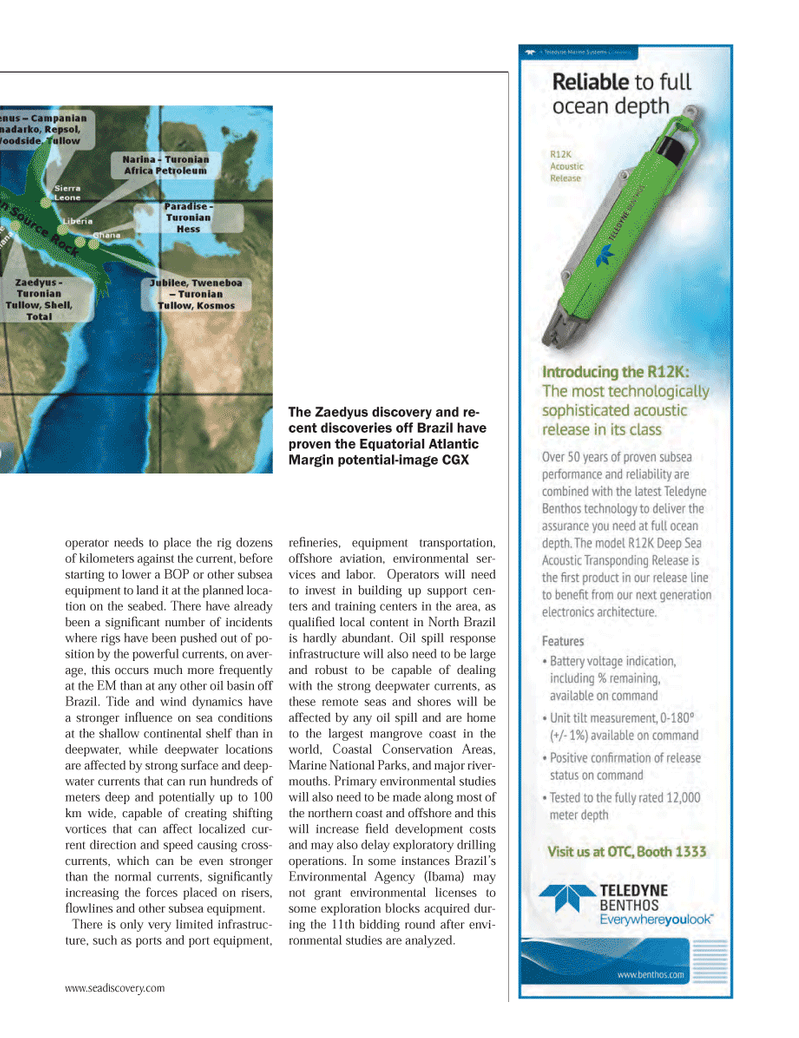
Page 37: of Marine Technology Magazine (April 2014)
Offshore Energy
Read this page in Pdf, Flash or Html5 edition of April 2014 Marine Technology Magazine
operator needs to place the rig dozens of kilometers against the current, before starting to lower a BOP or other subsea equipment to land it at the planned loca- tion on the seabed. There have already been a signifi cant number of incidents where rigs have been pushed out of po- sition by the powerful currents, on aver- age, this occurs much more frequently at the EM than at any other oil basin off
Brazil. Tide and wind dynamics have a stronger infl uence on sea conditions at the shallow continental shelf than in deepwater, while deepwater locations are affected by strong surface and deep- water currents that can run hundreds of meters deep and potentially up to 100 km wide, capable of creating shifting vortices that can affect localized cur- rent direction and speed causing cross- currents, which can be even stronger than the normal currents, signifi cantly increasing the forces placed on risers, fl owlines and other subsea equipment.
There is only very limited infrastruc- ture, such as ports and port equipment, refi neries, equipment transportation, offshore aviation, environmental ser- vices and labor. Operators will need to invest in building up support cen- ters and training centers in the area, as qualifi ed local content in North Brazil is hardly abundant. Oil spill response infrastructure will also need to be large and robust to be capable of dealing with the strong deepwater currents, as these remote seas and shores will be affected by any oil spill and are home to the largest mangrove coast in the world, Coastal Conservation Areas,
Marine National Parks, and major river- mouths. Primary environmental studies will also need to be made along most of the northern coast and offshore and this will increase fi eld development costs and may also delay exploratory drilling operations. In some instances Brazil’s
Environmental Agency (Ibama) may not grant environmental licenses to some exploration blocks acquired dur- ing the 11th bidding round after envi- ronmental studies are analyzed.
The Zaedyus discovery and re- cent discoveries off Brazil have proven the Equatorial Atlantic
Margin potential-image CGX www.seadiscovery.com
MTR #3 (34-49).indd 37 4/9/2014 10:52:44 AM

 36
36

 38
38
